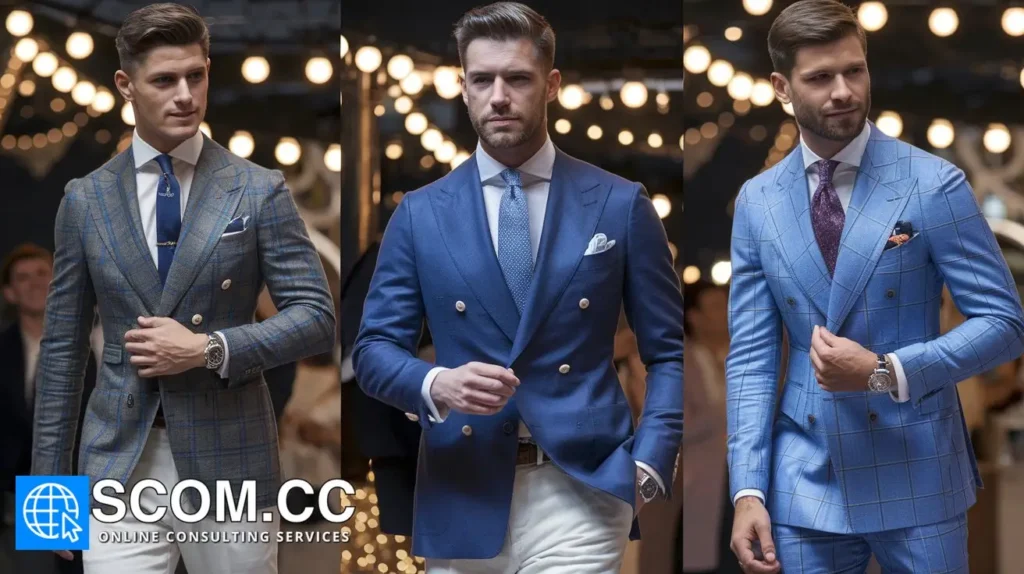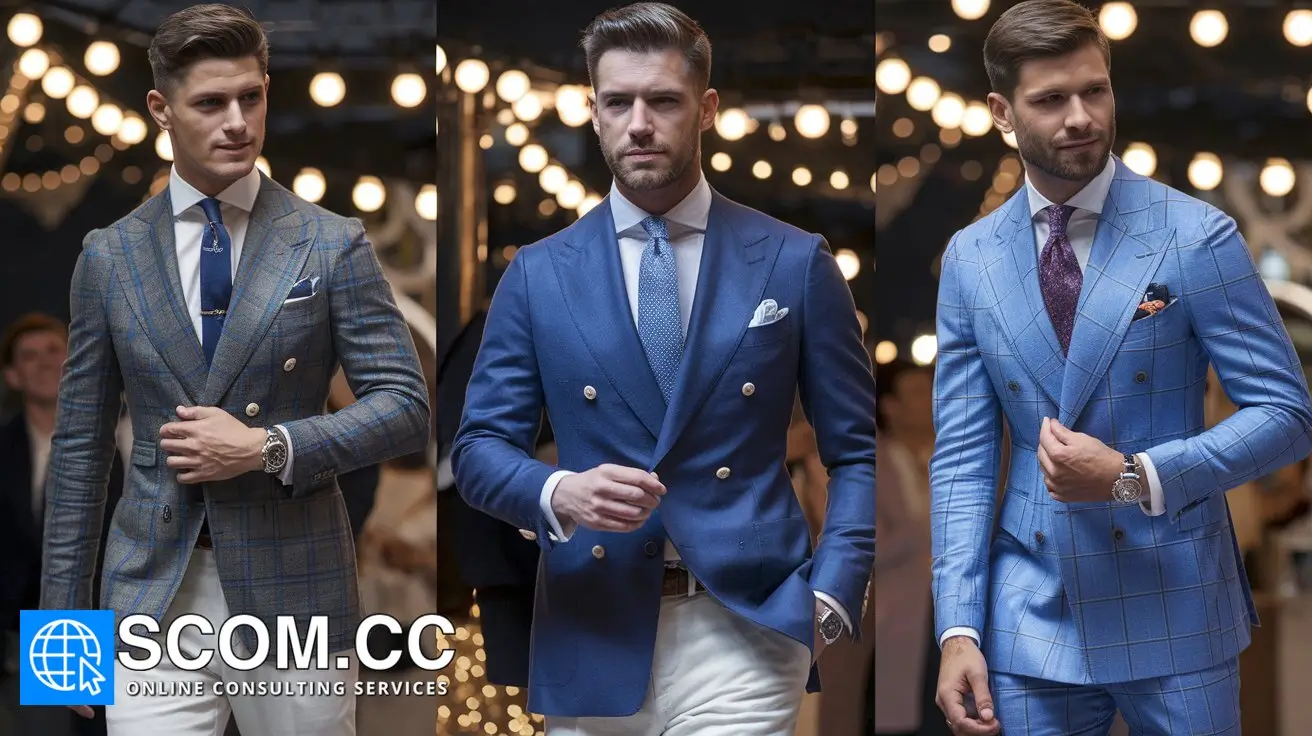Top Tailoring Trends for 2025

- Top Tailoring Trends for 2025
- The Resurgence of Classic Tailoring
- Sustainability and Eco-Friendly Fabrics
- Gender Fluidity in Tailoring
- Bold Patterns and Statement Pieces
- Technical Innovations in Tailoring
- Customization and Personalization
- Mixing and Matching Textures
- Revival of Vintage Tailoring
- Conclusion
Top Tailoring Trends for 2025
As the world of fashion evolves at a rapid pace, the tailoring trends for 2025 are set to redefine style and sophistication. In this comprehensive guide, we delve into the top tailoring trends that will dominate the fashion scene this year, offering insights into how these trends will influence both men's and women's wardrobes. From innovative fabric choices to cutting-edge design techniques, this article covers everything you need to know to stay ahead in the fashion game.
The Resurgence of Classic Tailoring
In 2025, classic tailoring is experiencing a grand revival. Traditional suits and blazers are making a comeback, but with a modern twist. Expect to see:
- Refined Silhouettes: Classic suits will be tailored to achieve a more streamlined, contemporary fit. Look for sharp, clean lines that enhance the body's natural shape.
- Timeless Fabrics: Wool, tweed, and cashmere remain staples, but they will be featured in updated textures and patterns, adding a fresh dimension to classic styles.
- Modern Details: Elements like sleek lapels, minimalistic pockets, and streamlined buttons will update the classic suit, merging tradition with modern aesthetics.
This trend emphasizes that timeless pieces, when reinterpreted with contemporary details, can offer both sophistication and relevance.
Sustainability and Eco-Friendly Fabrics
Sustainability is a critical focus for fashion in 2025, and tailoring is no exception. Designers are increasingly opting for eco-friendly fabrics and practices, including:
- Recycled Materials: Tailoring collections will prominently feature recycled polyester, organic cotton, and sustainable wool. These materials reduce environmental impact and cater to the growing demand for eco-conscious fashion.
- Innovative Textiles: Look for fabrics made from bamboo, hemp, and organic linen. These materials are not only sustainable but also offer unique textures and breathability.
- Eco-Friendly Dyeing Techniques: Designers are adopting low-impact dyeing methods that minimize water usage and harmful chemical discharge.
This trend reflects a broader movement towards responsible fashion, where style and sustainability go hand in hand.
Gender Fluidity in Tailoring
The boundaries of gender-specific tailoring are increasingly blurred, with gender fluidity becoming a significant trend in 2025. This trend is characterized by:
- Unisex Designs: Tailoring for both men and women will feature unisex silhouettes, allowing for versatile, interchangeable pieces that defy traditional gender norms.
- Inclusive Sizing: A move towards inclusive sizing ensures that tailored clothing fits a wide range of body types, promoting diversity and body positivity.
- Adaptable Styles: Look for designs that can be customized or adjusted to suit different styles and preferences, reflecting a more personal approach to fashion.
This shift underscores a growing acceptance of diverse gender expressions within the fashion industry.
Bold Patterns and Statement Pieces
Tailoring in 2025 will embrace bold patterns and statement pieces that add a touch of individuality to classic designs. Key elements include:
- Graphic Prints: Expect to see suits and blazers adorned with striking graphic patterns, from geometric shapes to abstract designs.
- Vivid Colors: Bright, bold colors such as electric blue, vibrant red, and emerald green will dominate tailored clothing, making a powerful statement.
- Statement Accessories: Accessories like oversized belts, unique cufflinks, and distinctive lapel pins will enhance tailored outfits, providing an extra layer of personalization.
This trend highlights a move towards more expressive and eye-catching tailoring options.
Technical Innovations in Tailoring
The integration of technical innovations is revolutionizing the tailoring industry, with new technologies enhancing both design and functionality. Key advancements include:
- Smart Fabrics: Incorporating smart fabrics that adapt to environmental changes, such as temperature-regulating materials and moisture-wicking properties, will enhance comfort and performance.
- 3D Printing: Designers are experimenting with 3D printing to create intricate detailing and custom-fit garments that offer a high level of precision and personalization.
- Augmented Reality: Augmented reality (AR) is being used to visualize and fit tailored clothing, allowing customers to see how garments will look and fit before making a purchase.
These technological advancements are setting new standards in tailoring, blending innovation with style.
Customization and Personalization
In 2025, the demand for customization and personalization in tailoring is at an all-time high. This trend emphasizes:
- Bespoke Services: Tailoring services that offer bespoke options, where customers can choose fabrics, fits, and finishes, will be increasingly popular.
- Monogramming and Embroidery: Personalized touches like monogramming and custom embroidery are becoming more prevalent, allowing individuals to add a unique flair to their tailored pieces.
- Tailoring Apps: The use of technology to facilitate customization, such as apps that allow users to design their garments or visualize different options, is on the rise.
This trend reflects a growing desire for clothing that reflects personal style and individuality.
Mixing and Matching Textures
Combining different textures within tailored outfits is a prominent trend for 2025. This approach involves:
- Contrasting Fabrics: Mixing materials such as velvet with leather or wool with silk creates a dynamic visual effect and adds depth to tailored ensembles.
- Layering Techniques: Layering garments of varying textures, such as a tweed blazer over a cotton shirt, enhances the overall look and feel of the outfit.
- Textural Details: Incorporating textured elements like embossed patterns, fringe, and appliqué can make tailored pieces stand out.
This trend is all about creating visually interesting and tactilely engaging garments.
Revival of Vintage Tailoring
The fascination with vintage fashion continues to influence contemporary tailoring, with a focus on:
- Retro Cuts: Tailoring inspired by past decades, such as 1950s slim suits or 1970s wide lapels, is making a comeback with a modern twist.
- Vintage Fabrics: Incorporating fabrics and patterns from previous eras, like houndstooth or pinstripes, into modern designs adds a nostalgic touch.
- Historical Details: Reinterpreting historical tailoring details, such as double-breasted blazers or high-waisted trousers, brings classic elegance into the present.
This trend celebrates the rich heritage of tailoring while adapting it for today's fashion landscape.
Conclusion
The tailoring trends for 2025 offer a rich tapestry of innovation, sustainability, and style. From the revival of classic tailoring to the integration of technological advancements, this year promises a dynamic shift in how tailored clothing is designed and worn. Whether embracing gender fluidity, experimenting with bold patterns, or opting for custom personalization, the future of tailoring is both exciting and diverse.

To explore more about tailoring, visit our Blog of Tailoring. If you have any questions or need assistance, go to our contact page. Additionally, you can find more information about tailoring and consulting at this tailoring and consulting portal.

Leave a Reply